The next-gen MacBook Pro with Retina Display Review
by Anand Lal Shimpi on June 23, 2012 4:14 AM EST- Posted in
- Mac
- Apple
- MacBook Pro
- Laptops
- Notebooks
The King of All Notebook Displays
For years Apple has been shipping some of the best displays in consumer notebooks, but the MacBook Pro’s Retina Display is in a league of its own. While I never liked the phrase “painted on” in reference to the iPad and iPhone Retina Displays, that’s the best way I can describe the effect the MacBook Pro’s Retina Display has on me. Text really does look painted on. The effect is really the result of two things.
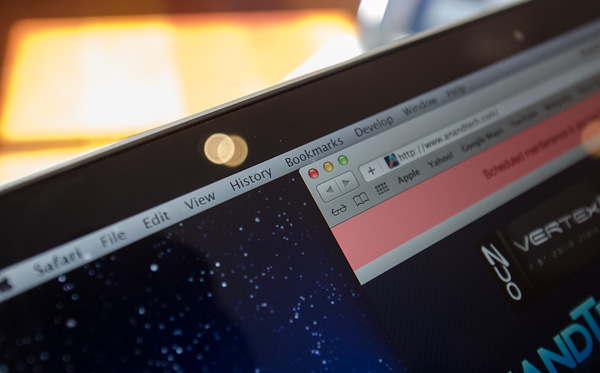
The first is Apple’s removal of its cover glass. LCD panels aren’t particularly attractive, they are ugly squares composed of two pieces of glass and a number of filters/polarizers. To hide the ugly edges, display makers wrap bezels around the display. Most people aren’t fond of bezels so next came a ton of effort to minimize bezel size. An alternative is to simply place a third piece of glass over the entire LCD assembly and make it look as if the bezel and LCD panel are integrated. This outermost layer is known as a cover glass and is what Apple uses on all of its glossy displays. If you’ve ever taken apart a Cinema/Thunderbolt Display or a newer iMac you’ll know that the cover glass is literally just a piece of glass that you have to remove with some suction cups.
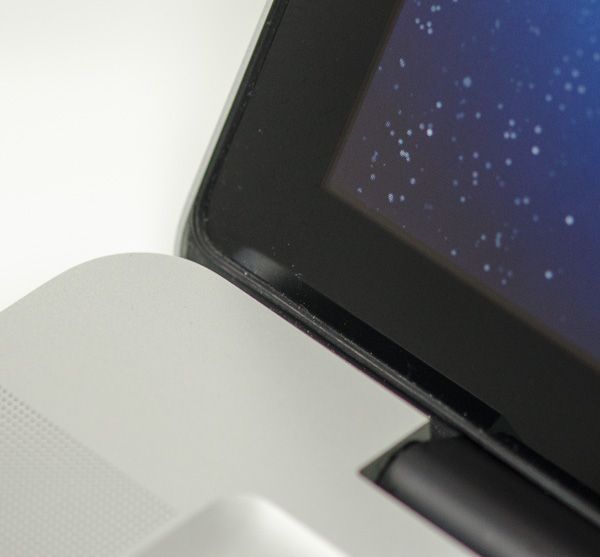
Non-Retina MacBook Pro, notice the gap between the outermost LCD glass and the cover glass
The MacBook Pro’s Retina Display does away with the cover glass and instead uses a fairly unique LCD assembly. There are still two pieces of glass but the outermost glass is actually a different size and shape - it integrates a bezel. By integrating the bezel into the outermost glass in the LCD stack you get the same effect as a cover glass but without the added reflections it introduces.
You also limit the possibility of dust getting trapped between the cover glass and the LCD. The danger is that you no longer have a protective piece of glass in front of your expensive new LCD. If you scratch the display you're scratching the LCD itself. While this has been true for conventional matte displays for a while, it's worth mentioning if you're used to Apple's glossy displays where you did have that added security layer.
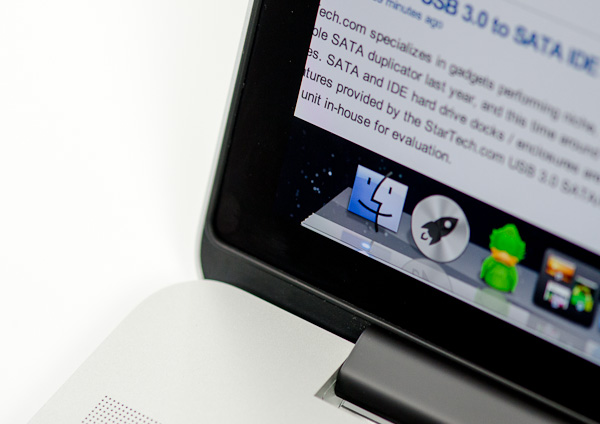
The MacBook Pro with Retina Display, no gap, no cover glass
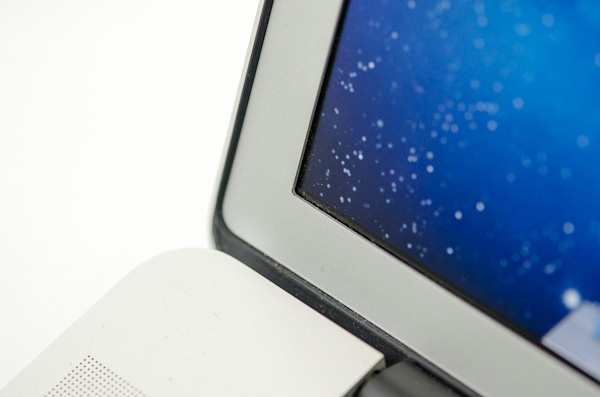
The 2011 MacBook Pro with High-Res Matte display option, no cover glass, top bezel

From left to right: 2010 High Res Glossy MBP, 2012 rMBP, 2011 High Res Matte MBP
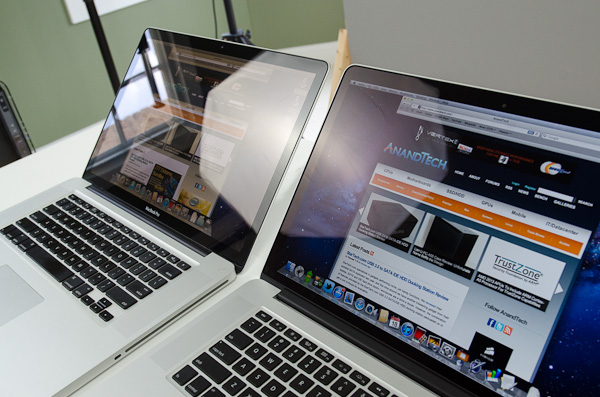
Glare handling indoors - 2011 High Res, Glossy MBP (left) vs 2012 rMBP (right)
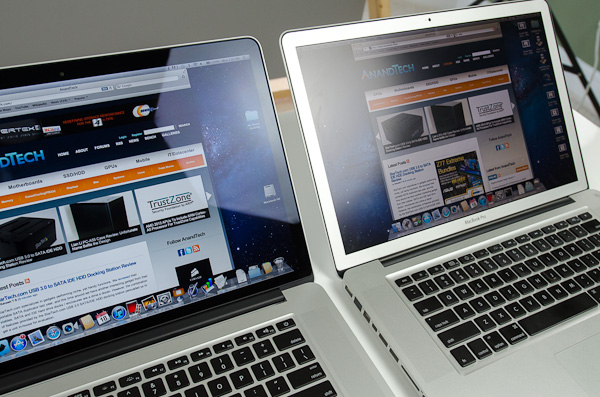
Glare handling indoors - 2012 rMBP (left) vs. 2011 High Res, Matte MBP (right)
The Retina Display is also obviously an extremely high resolution panel at 2880 x 1800. Note that this is 44.6% more pixels than Apple’s 27-inch Thunderbolt Display, and 26.6% more pixels than the 30-inch panels that we’ve loved for so long - all in a 15.4-inch notebook display.
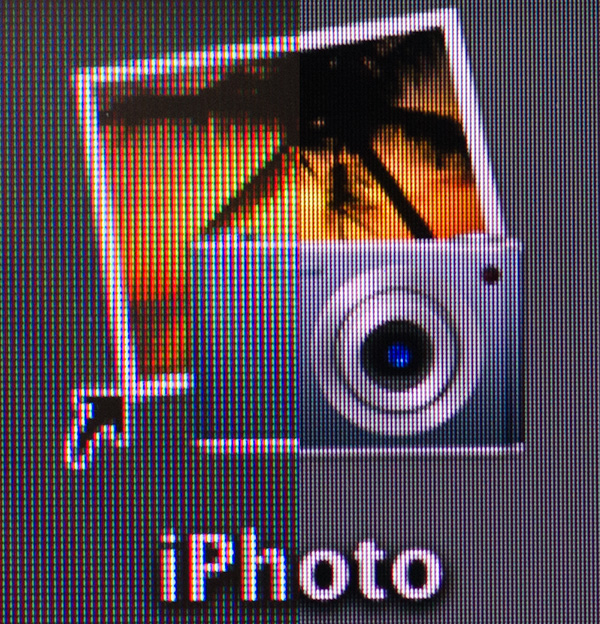
An iPhoto shortcut, High Res 2011 MBP (left) vs. Retina Display MBP (right)
At 220 pixels per inch it’s easily the highest density consumer notebook panel shipping today. At normal viewing distances and even with my face closer than I’m comfortable putting it I simply cannot discern individual pixels.
It’s the combination of these two elements, the removal of the cover glass and the insanely high pixel density that makes everything from text to UI elements just look painted on the new Retina Display. And the effect is gorgeous. I’ve never seen a prettier panel and it’s actually ruined me for pretty much all other displays, notebook and desktop.
While I can appreciate the iPad’s Retina Display, the impact from the MacBook Pro’s display is even more significant. Perhaps it’s because I still spend so much time working on a standard, non-tablet display, but I’m far more excited about this display than anything else Apple has delivered under the Retina moniker.
It’s not just pixel density that Apple has to offer here. Similar to its Retina Displays in the iPhone and iPad, the MacBook Pro’s Retina panel ditches TN in favor of IPS technology. The result is an incredible improvement in viewing angles. On a notebook I don’t spend a lot of time viewing it from far left/right angles, although I see the benefit when I’ve got others huddled around my display. Here the panel performs admirably - you lose brightness at far left/right angles but there’s no perceivable color shift. In fact, the painted on effect is even more impressive at these far left/right viewing angles.
For a single user however the more impressive characteristic is just how good the display looks at vertically off-center angles. I wrote much of the initial parts of this review while on an airplane in coach, which with a 15-inch notebook on my lap means I’m going to be looking at the display at a weird angle to begin with. The thinner rMBP doesn’t do enough to make the airplane usage model any better if the person in front of you decides to recline, but the IPS panel does make the display perfectly usable at the off-center angle you’ll inevitably have to deal with.
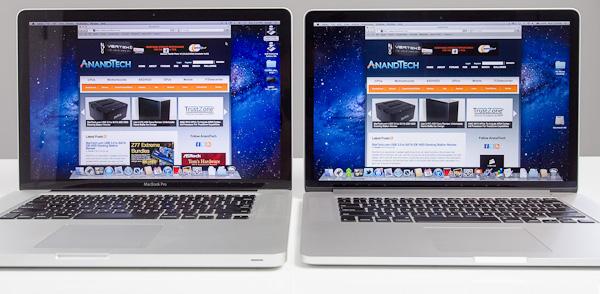
2010 High Res, Glossy MBP (left) vs. 2012 rMBP (right)
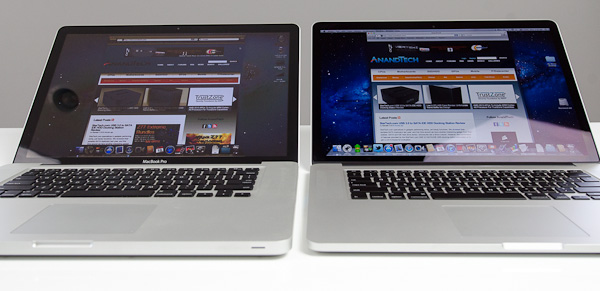
Hello colorshift!
2010 High Res, Glossy MBP (left) vs. 2012 rMBP (right)


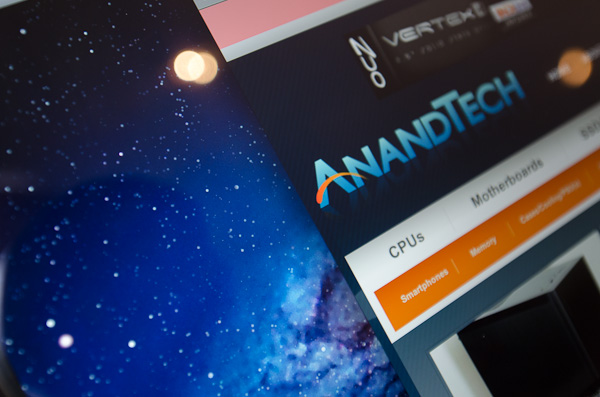
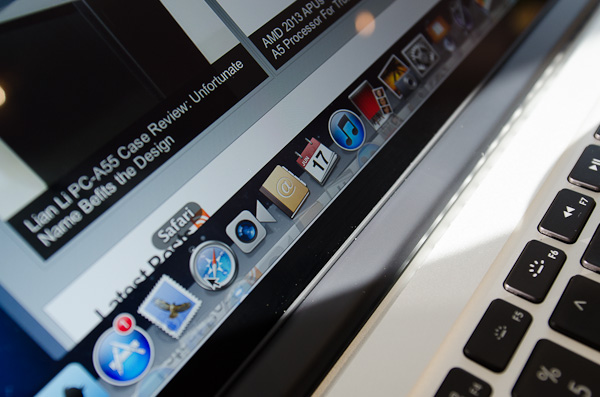
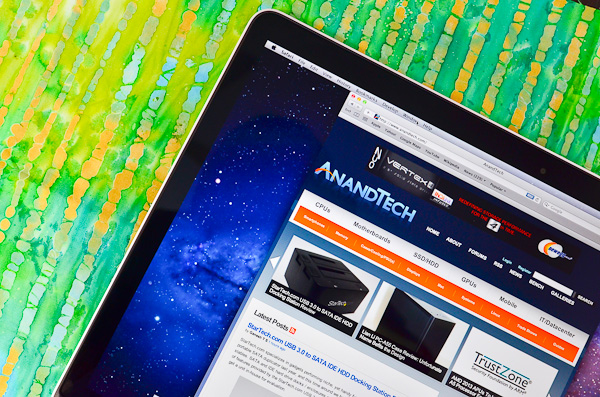
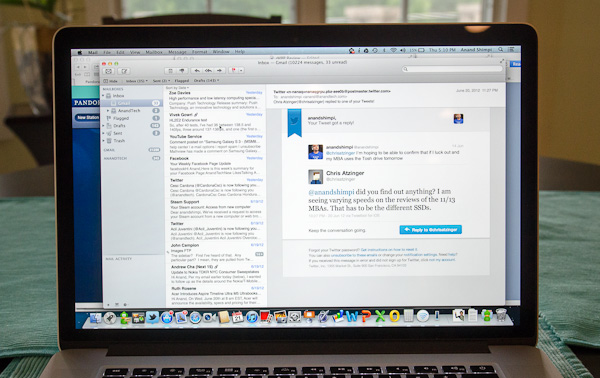
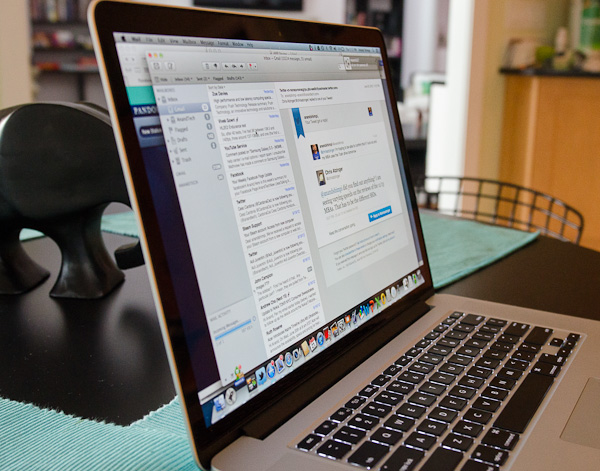








471 Comments
View All Comments
crazysurfanz - Saturday, June 23, 2012 - link
Just a pity they're USB2 ports - hopefully they'll bring out a new version with USB3.cioxx - Sunday, June 24, 2012 - link
Not everyone, perhaps even the majority of users, need ethernet on the MBPs. If Apple were to include a free adapter it would be wasteful and ultimately subsidize the few users who do need it. $30 is not a lot of money for a machine that costs over $2k.Think of that adapter as a price cut for the majority, not the other way around. Apple is still going to maintain their margin no matter what.
It's good to see them eliminate waste and make it optional. I remember getting all kinds of things with my PowerBook G4s which ended up in the landfill. Stuff like brick extensions and VGA, DVI adapters.
frabber - Saturday, June 23, 2012 - link
What if the display resolution would be set at 2880x1800 and all apps would be using scalable vector graphics in the future. Would that at least avoid any downscaling and hence improve performance? (no more choppy scrolling for example?)DeciusStrabo - Saturday, June 23, 2012 - link
Sure it would. But it would make a very hard switch for a couple of years until all Apps are using the new model. Although not worse than the model Apple now uses, where everything not made for Retina looks actually worse, not better too.solipsism - Saturday, June 23, 2012 - link
Apple has been working on RI for a long time. I think it was back in first Tiger betas that they first stated that RI would show up in the OS. It silently vanished after that. They then had a secret option that could enable RI but it was incomplete and has remained incomplete ever since.I'm guessing that it's just too resource intensive to use vectors over bitmaps for an entire OS that the user experience becomes greatly diminished. Then you have bitmaps you simply can't get away from so that becomes another obstacle.
I like how MS created the Windows Presentation Foundation that was a viable intermediate option for uses but it's not RI and it never really evolved. It did allow for object scaling in a better way than OS X but what Apple is doing now with double resolution displays trounces MS's stagnant WPF.
ananduser - Saturday, June 23, 2012 - link
RI exists in concept. Implementation however is utopic. When we are whining here about it, we're actually referring to the real life, flawed variant. Windows object scaling was always better than the OSX variant. The current unit reviewed here achieves a better result but not with standard scaling, instead with fixed presets and by obfuscating res access. The result is good but it is not resolution independent, it's in fact entirely dependent on a subset of presets which are specially tuned(with pre-rendering and such).Now I ask you, will the world devs write apps in two flavors, one to match Apple's quirky retina pre-rendering routines and one that matches W8's different approach ? Out-of-bound patches will be applied to current 3rd party osx apps just to match Apple's current implementation ?
Ryan Smith - Saturday, June 23, 2012 - link
Devs shouldn't need to do anything special for Mac OS X besides making sure their applications are HiDPI capable, which means having suitably detailed artwork and that custom widgets/text are the right physical size at 200ish DPI. In practice this means designing once on a HiDPI display, and tools take over on downresing for older displays (I'd have to check the dev documentation to see if devs need to generate those assets if the OS simply downreses assets at runtime).Metro is actually going to be more complex, since MS's guidelines suggests that devs target 100%, 140%, and 180% DPI.
ananduser - Sunday, June 24, 2012 - link
I know that itunes/Safari/3dmark on Windows don't ever plan to make proper use of WIndows resources and they will always and forever suck in this aspect.Windows is supposed to work on Earth's PCs(macs included). Isn't that an admirable goal?
I wanted to whine some more about Anand's failure to find the DPI slider in Windows but I read the review's update. Victory!
andy318 - Saturday, June 23, 2012 - link
Thanks for taking the time to write such a thorough review! You've educated us about the good and bad parts of the rMBP in a very objective manner.No one else explained the details about rendering the screen at 1680, 1920 resolutions as well as you did.
felixneo - Saturday, June 23, 2012 - link
I know that in previous posts you mention that all the 2012 lineup has 6g ssd's, but apple insist's that the retina models are equipped with these, but is silent about the rest. It is certain that the optional ssd's for MacBook Pro 15' are in fact 6G?